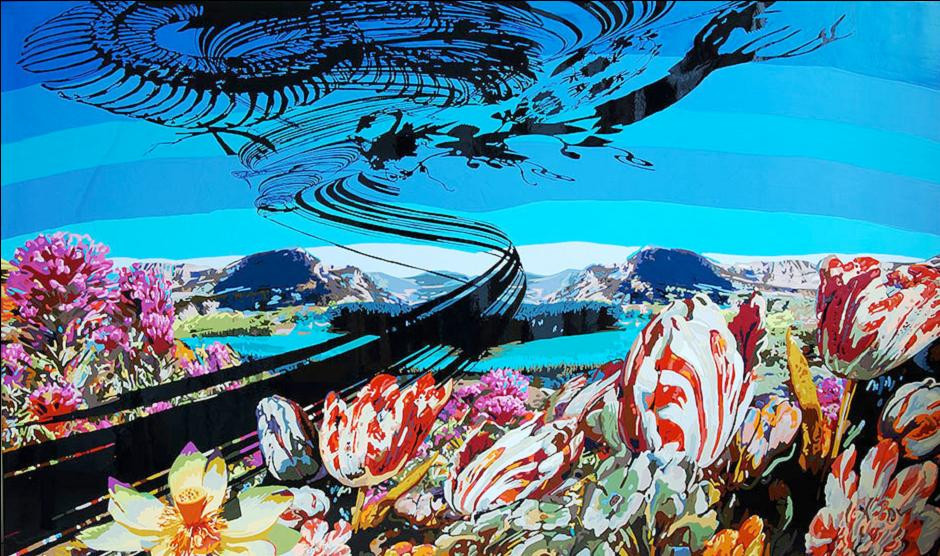Griff Williams: It Is Not Down In Any Map; True Places Never Are
February 20 2010 - April 28 2010
MAM is pleased to host a homecoming for this native Montana artist. The recently created enamel and resin paintings present an elaborate blend of visual references, using the landscape as the foundation for his pictorial space. The imagery alludes to the glorified natural landscapes depicted in turn of the century photographic postcards. In a process-oriented approach, representations of these landmarks are abstracted and distilled into essential areas of color.
Art in the American West has a rich tradition informed by the landscape. Williams plays off of the tradition established as a consequence of European influence on American art. From the Hudson River School painters such as Thomas Cole and Thomas Doughty to the Western painters C.M. Russell and Frederick Remington, artists have attempted to put down on canvas their romantic interpretations of nature and their visions of a vanishing frontier. However, Williams departs from these traditions, and his attention to craftsmanship and editorial abstraction are characteristics unmistakably his own.
Williams states, "At the heart of all my paintings is the landscape as I grew to know in Montana. I use the land as a subject and metaphor. There is a centuries old tradition of mythologizing the land in both painting and photography. My work has sought to address this." Williams' methodology involves an elaborate paint by number process he reinvented. Each segmented area of the composition is numerically assigned to a specific color, a limited palette professionally mixed to replicate the distinctive colors in a 1950's Color Craft paint by numbers set. The hand-made application involves repeated layers of poured transparent resin and stenciled enamel shapes. At first glance, this meticulous process is belied by the graphic flatness and slick surfaces of the work, which may initially seem manufactured or digital. Williams presents an extravagant visionary experience, a blend of the material and the optical. This calculated technique speaks to us of setting aside the romanticism of the past. Collectively, these abstracted landscapes serve as metaphors. The land that has inspired us for so long pays tribute to the reverence for nature that still exists. Many American landscape painters' expressions are rooted in American cultural transcendentalism. There is a belief that the land will always be, yet the winds of art, the swirling pigments, and words will never be able to completely describe nor reflect its glorious existence. Thankfully, Williams presents us with an entirely new and unique vision, and from this, we can appreciate that land will continue to provide fodder for inspiration long into the future.
Williams, born in Montana, received his Master of Fine Arts from the San Francisco Art Institute in 1993 and a Bachelor of Fine Arts from The University of Montana in 1989. He lives and works in San Francisco where he has owned and operated Gallery 16 since 1994.


